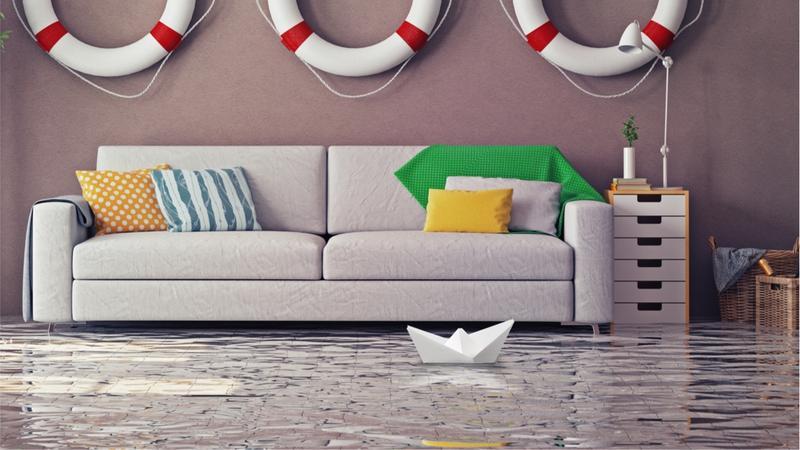Floods are a very real threat to many homes across Canada; some areas may be more prone than others. What many people don’t realize is that not all water damage is viewed the same way by insurance companies. While some water damage is covered, there are some specific cases where it is not. Unfortunately for many homeowners who do not realize it, flood damage is generally on the "not covered" list.
Types of Water Damage
Water damage can come from a variety of sources. It can be a burst pipe, a leak in the roof, or of course, a flood. Your home insurance policy outlines which sources of water damage are covered by the policy, and which are not. In most cases, sudden and accidental discharge of water into your home is a covered peril; this means that if a pipe bursts out of nowhere, you’re likely covered.
Damage as a result of negligence, on the other hand, may not be covered. If you know about a leak and fail to fix it, the insurance company may not pick up the tab for damage. Floods that happen as a result of weather, including excessive rainfall, snow runoff, and landslides are usually not covered by a standard homeowners policy.
Flood Insurance
For those who live in an area known to experience flooding yearly, such as Manitoba’s Red River Valley, or for homes that are lake or river-front, flood insurance may be an option. It may even be a requirement of your mortgage company in some cases. Flood insurance is a separate policy that you will need to pay an additional premium to obtain.
It’s important to be aware of the terms of your flood insurance policy and know what is covered and what is not. In some cases your personal property may not be included in the coverage, so although you will get help with damage to the building, anything else that is damaged is a loss you will have to cover. Flood insurance may be expensive in some cases if the risk of a flood is high in your area.
Preventing Flood Damage
The best way to avoid the cost of flood damage is to prevent floods from damaging your home. Make certain that your house is prepared for a potential flood. If you’re in a flood area, you should have a raised foundation that allows water to pass beneath. Landscaping in your yard is very important as well. Building retaining walls and improving the drainage on your property can go a long way towards avoiding flood damage to your home. Be sure to correct any drainage issues right away. Install a sump pump and make sure it is functioning properly to help prevent water from entering the basement of your home. Check valves and proper sealing of basement walls and windows can also prevent flood waters from entering your home,
Flash floods can happen, but in most cases rising water can be seen coming. Sandbags and ditches are a good way to prevent it from reaching your home. When flood waters are on the rise sandbags will usually be provided; use them properly to create a barrier. In the event of a flash flood or fast-rising water, remember that lives are more important that property, and also follow evacuation orders promptly. Move valuables to higher levels if you can, but don’t risk anyone’s life.
After a Flood
Even if you do not have coverage for the flood damage, it’s not a bad idea to contact your home insurance company. They can direct you to emergency clean-up services and let you know if there is anything at all in the damage that could be covered. They can also help you to obtain the right coverage to avoid a repeat of the financial cost of a flood.
Flood damage can show you where the weaknesses are in your home’s preventative measures, so take steps to correct those problems right away. When restoring the home, be sure to add all extra safety measures available and bring everything up to the current standards for flood prevention in order to avoid such costly damage it the future.
No one wants to think about a flood or its aftermath, but the reality is that floods do happen. Since most of them happen in the spring, securing your home in the fall before the winter hits is the best way to ensure you don’t see spring runoff damage. Take the time to inspect all of your flood prevention measures before the winter months make it impossible.
